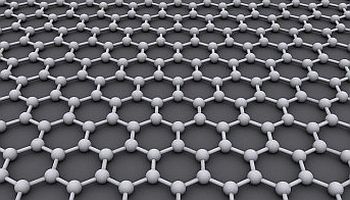Researchers Use Graphene For Printable Electronics

Cambridge scientists use wonder-material graphene to improve speed and density of printable electronics
Researchers at Cambridge University have demonstrated a new use for the wonder-material graphene, finding that it can be used in conjunction with ink-jet printing processes to “print” graphene-based transistors.
Graphene, derived from graphite, was discovered by University of Manchester scientists in 2004 and is expected by some to replace silicon as the primary material in electronic devices.
Inkjet printing
 The Cambridge scientists, led by Andrea Ferrari of the Department of Engineering, are building on the already-established use of inkjet printing techniques in the manufacture of flexible electronics such as touch-screens, electronic paper, RFID tags, photovoltaic cells and electronic textiles.
The Cambridge scientists, led by Andrea Ferrari of the Department of Engineering, are building on the already-established use of inkjet printing techniques in the manufacture of flexible electronics such as touch-screens, electronic paper, RFID tags, photovoltaic cells and electronic textiles.
“Drop on demand ink-jet printing has progressed from printing text and graphics to a tool for rapid manufacturing, being now an established technique to print Thin Film Transistors (TFT) based on organic conducting and semiconducting inks,” the team wrote in a paper published last week.
Such products are however currently relatively large and slow, compared to standard industrial manufacturing techniques.
The scientists found that graphene could be used to replace the metal nanoparticles commonly used in printable electronics, resulting in faster speeds and greater stability.
“Near-ballistic transport and high mobility make [graphene] an ideal material for nano-electronics, especially for high frequency applications,” the scientists wrote. “Furthermore, its optical and mechanical properties are ideal for micro- and nanomechanical systems, thin-film transistors, transparent and conductive composites and electrodes, and photonics.”
Graphene ink
One of the challenges the team faced was the fabrication of a graphene-based ink. The graphene needs to be flaked from a base of graphite, centrifuged to remove larger particles, and combined with a solvent, which in this case was N-Methyl-2-pyrrolidone (NMP).
The results showed improved speed and allowed for smaller devices to be printed, the team said. “This demonstrates the viability of graphene-inks for flexible and transparent electronics,” the team wrote in its study.
A study published in August covered graphene’s properties as an accelerator, predicting it could be used to boost Internet speeds and build more responsive touch-screens, among other uses.
In October the government said it plans to invest £50 million into the creation of a Graphene Global Research and Technology Hub intended to commercialise graphene.
In April a team of researchers at Illinois University in the US claimed that graphene may be a self-cooling material that could result in the production of more efficient and energy-saving devices.
If the Illinois study is correct, the problem that has brought the reduction in silicon chip sizes to a halt could be overcome by graphene. As chip circuitry is reduced in scale, heat production becomes a problem that threatens to fry the chip before it can be tested. This has resulted in Intel, AMD and others looking at multicore processors as a way to increase chip speeds while reducing heat production and efficiency.